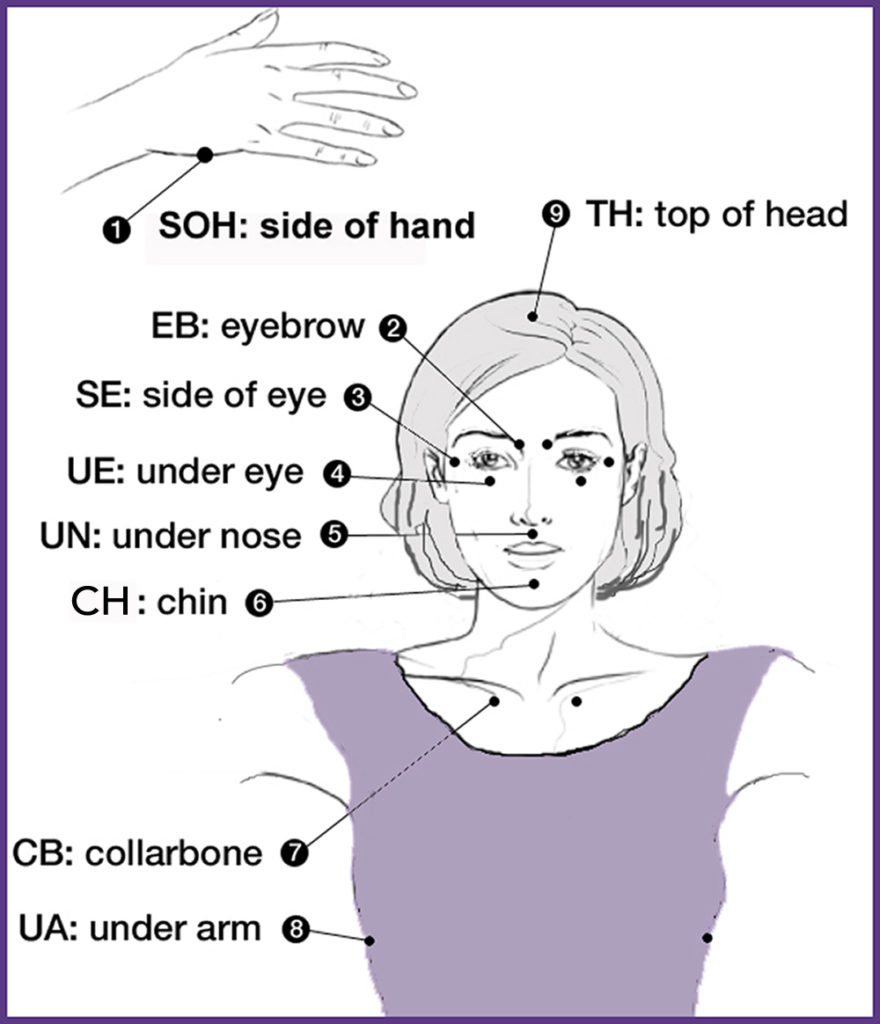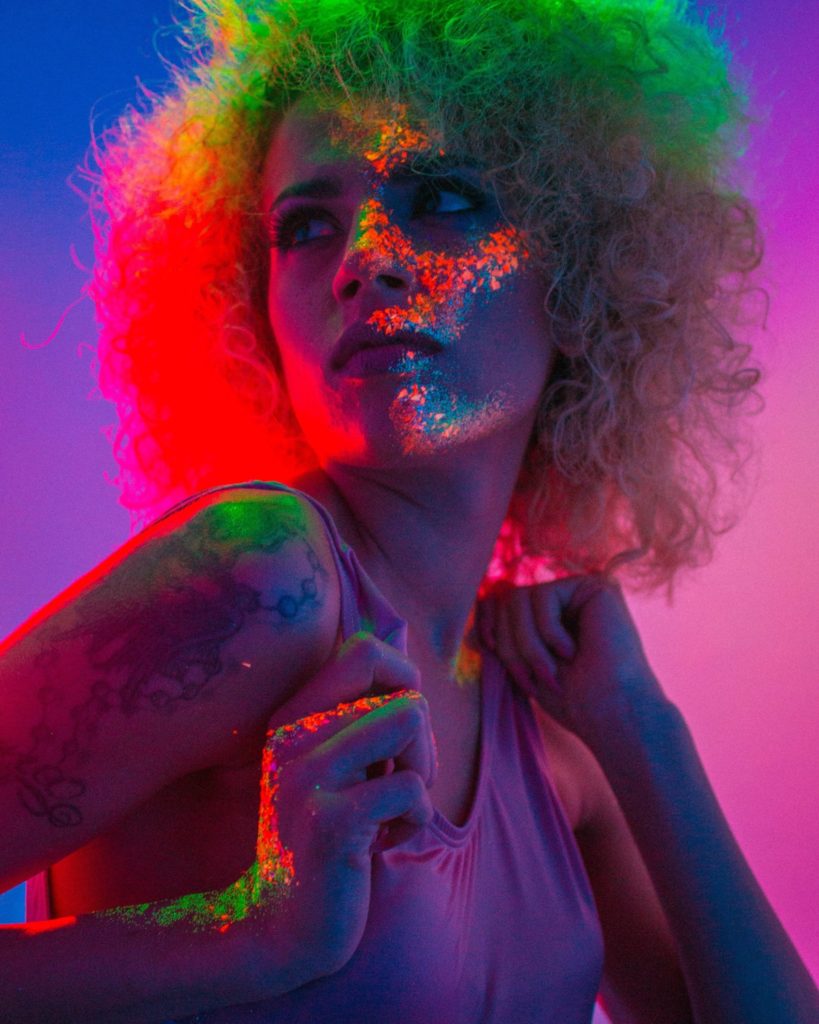I used to love painting portraits. For a very long time it was my main creative outlet. But somewhere along the way I became filled with a deep creative anxiety which was fuelled by the voices of my inner critic. All of a sudden my art was shrouded in a veil of judgement, expectation and fear. I was so afraid of making a mistake, I couldn’t even let myself try.
If you’ve ever experienced creative anxiety this scene will sound familiar to you…
You sit down, ready to work. You start. Then all of a sudden a black cloud of doubt wafts above your head. Everything you do is rubbish! Says the voice in your head. You want to ignore it but maybe it’s right? Now, the paragraph you have just written is stupid. The picture you have started is silly and childish, and though before you thought the imperfections were charming, style defining and just abstract enough, now they are judging you and calling you out on your short comings. You suck!screams the voice.
The poem you wrote is flat. Its intentions are too obvious. The blog post you started is passée and has totally been done before. Argh. Your stomach is now in knots. Twisting and turning. You want to work through this but you can’t. Now you are too afraid to make a mistake and are over thinking everything! It is all too hard. Why bother. Stop. Cry. Give up.
When it comes to your creative work the inner critic can cause damaging creative anxiety. It is evil, brooding and nasty.
The Inner Critics and Creativity
Personally, I have two inner critics that govern creativity. One is an aged crone whose only mission in life is to clean her home; she sees any act of creativity as self-indulgent, selfish and lazy. Her moto is “Cleanliness is next to Godliness.”
The second creativity inner critic is an evil pixie who has come to loiter on my shoulder. The pixie, Morag, has sat on the shoulders of many an artist but she’s never been impressed. She has very high expectations of art but they’re so high that she’ll never ever be satisfied. Morag doesn’t understand the concept of learning, of growth or persistence. And unlike the aged crone, she’s just plain mean.
Morag whispers cruel nothings into my ears. She pollutes my mind with doubt. She wants me to give up. She works on a contract basis for the Ego; whose job is to protect me from embarrassment, shame and disappointment. But Morag doesn’t know that. She’s just getting paid to call me names.
The Inner Critic Senses Fear
The funny thing is that Morag isn’t always around. Yes, there are times when she pops up when I’m writing. But once I get my flow on she can’t keep up. She also buggers off when I get out the clay. When I’m working with textures and varnish and wax she is nowhere to be seen. But as soon as I pick up the pencil she flutters back into my life telling me “You suck at this!”
She doesn’t stop there. Oh no. She keeps it up. Even if I try to block out her taunts by listening to Joni Mitchell on my Ipod, the nasty little chestnuts she hurls still penetrate. “You did the nose wrong!” she jeers. “Now, you’re going to get it wrong over and over again!” Then finally once I’ve fought through to the end. “Yikes, I wouldn’t bother painting that one!”
I ignore her vigilantly. I have learnt to now. I used to listen. Now I tune her out and keep going. “Shut up Morag!” I yell. Sometimes it works, sometimes it doesn’t. On the occasions when I get to the painting stage it all gets much better. Painting is my safe zone; it is free flowing and calming. The pixie is bored at that stage – she knows she has lost the fight. Her heart is no longer in it so off she flutters – she has other dreams to crush elsewhere.
Fighting the Inner Critic
So how does one fight the Inner Critic of creativity? It doesn’t matter if we’re playing guitar, knitting, baking, painting or writing. If our mind is filled with nasty, doubting, judging voices, nothing is going to run smoothly. So how do we get thought it?
Give them a Name
If you name the inner critic of your creativity it makes it much easier to ignore their nasty voice. What’s more, it separates the voices of self-doubt from your own mind – they are not your thoughts or your doubts, they are the voices of your inner critic. Now, when I hear Morag’s nasty jibes I smile and laugh. She’s so awful she’s actually quite funny.
Tap it Out with EFT

If your case of creative anxiety has already begun to prevent you from even attempting your creative work, then it’s time to get serious! We’re calling in the big guns to tap out that anxiety. I love tapping. I use it all the time for all kinds of anxieties or ailments.
If you haven’t yet heard of EFT or tapping, put simply, it’s a cross between acupressure and hypnotherapy. But tapping on the body’s meridian points at the same time as speaking through affirmations, the brain is able to release some of the anxiety associated to the specific issue.
How to Practice EFT
To tap on your area of creative anxiety you first need emotionally connect to the issue of concern. To do this you tap on the side of the hand (known as the Karate chop point) while repeating a phrase that gets you into the anxious thought.
You might like to start with a script along the lines of:
“Even though I have this creative anxiety, this fear of painting portraits (or whatever is stressing you out) I love, accept and forgive myself completely and utterly. Even though every time I start drawing I hear the voices of my inner critic telling me I suck, that everything I do is terrible, that there’s no point in even trying, I love accept and forgive myself completely and utterly.”
Once you feel completely connected, it time to start the cycle of tapping. Move through the points repeating the phrase slowly, “even though…I have this creative anxiety…even though…I hate my work…Even though I am afraid to paint…I love, accept and forgive myself completely and utterly.
Once you’ve completed a few cycles take a few breaths and see how you feel. Are there any memories or thoughts that have come up for you? These can be a helpful clue to where these limiting beliefs were formed. You may wish to focus in on them: “Even though someone told me I could not draw when I was little, I love accept and forgive myself completely and utterly.”
For the final round of tapping – you will instinctively know when this is – start going through the process of letting go. “Even though I have this creative anxiety, these memories from childhood, I choose to let go now. I am letting go now. I trust in the universe, I trust in my unique power and I choose to let go now.”
Meditation
I harp on about meditation all the time but it really is a game-changer. Before you start your creative work take a 15 -20 minute guided meditation. Taking this time to clear your mind before you start will greatly help to quiet the thoughts and free the mind.
Shake it out
This is a big one for me. When I engage in cardio for over 30 minutes, something explodes in my head. I can feel all doubt, sadness and disdain melt away. In its place I am left with an abundance of inspiration! Most of my art, blog, and play ideas come from an exercise endorphin rush. So remember to stay active and pump out that stagnant dust.
Don’t Stop!
Flip that pixie the middle finger by hitting it everyday. Don’t let that anxiety keep you away from what you love doing. And definitely do not let it make you dread it like I did. If you persist, soon the Pixie will bugger off and leave you to it.
Pick up that guitar, pen or paint brush and keep at it. Soon, you will find that what once was challenging is now a natural function. When things become more familiar, the fear goes away – learning to drive is a good example of this. The first time we get behind the wheel can be scary but eventually it becomes second nature.

Embrace the Learning Process
We never ever stop learning. Wouldn’t it be sad if we did?
Every time we start something new we are going in blind. We have no previous knowledge to work with so realistically there is no way we can master something at the first attempt.
In his book Outliers, Malcolm Gladwell writes about the 10,000 hour rule. He explains that in order to become a professional in any field one must simply spend 10,000 hours on it. Natural ability has very little to do with it, because if you simply put in your 10,000 hours you’ll become pretty damn good regardless of whether you could bend a ball like Beckham when you were two.
It can be helpful to keep a work log so you remind yourself how far you’ve come. When I look back on my very early blogs, poems and stories, part of me winces – the other part of me is so proud that I never gave up. I wrote and I learnt and I learnt as I wrote.
Look at your old work and how it has developed. Give yourself props. You are doing well. Remember – The first one’s the worst one!
Replace the negative voices with positive affirmations
Take a breath and tell the voice in your head to bugger off. Instead replace that nasty quip with a positive affirmation like “I am a passionate, skilled, artist.” Tell yourself you are doing well. Be kind to yourself.
“I say “Out” to every negative thought that comes to my mind. No person, place, or thing has any power over me, for I am the only thinker in my mind. I create my own reality and everyone in it.” – Louise Hay
Have a plan
It can help to have a goal, theme or purpose for what you are doing. It doesn’t need to be huge. It could just be that you are looking at exploring portraiture emotion, you could be aiming to write a novel for publishing, a play for a festival by a given date, perform a song at a friends party. It could be anything. All you need is something to give the work purpose and drive and also inspire more work to come.
Sisterhood
It is absolutely essential for creative women to surround themselves with other creative women. Whether it be to bounce ideas off of each other, to support each other’s projects, to inspire each other, whatever.
Sometimes the best way to work through a creativity snag is to talk it out, and if like mine your partner/spouse/lover is somewhat creatively un-opinionated then it is vital to find someone to talk with about art and creating.


